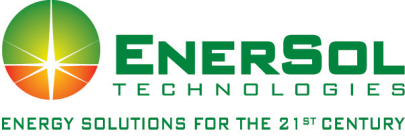

Syngas, or synthesis gas, consists primarily of Carbon Monoxide (CO) gas and Hydrogen (H2) gas. Materials containing organic matter can be gasified to produce syngas. The carbon in the material combines with oxygen to produce Carbon Monoxide gas. Hydrogen in the material or from the addition of steam produces Hydrogen gas.
Syngas is useful as a fuel or as a raw material for the production of a number of chemical products. The following are a few of the useful products that can be made from syngas produced by EnerSol's PEPS® and PEGS® processes:
The correct EnerSol PEPS® or PEGS® system for your application will depend on:
Typically, a PEPS® unit is focused on the destruction of wastes (with optional generation of energy or other product) while a PEGS® unit is optimized for the conversion of feed material to produce energy or other products.
EnerSol engineers will be happy to assist you with the selection of an appropriate system for your application. Please Contact Us for further information or assistance.
The production of plasma to enhance high temperature processing requires some amount of energy input. However, EnerSol's PEPS® and PEGS® processes are designed to optimize the energy balance. For example, a PEGS® unit may be designed to use the minimum amount of plasma energy input to achieve the desired syngas quality. The end result is a unit of optimal efficiency that is cost-effective for the application.
Pyrolysis involves heating the feedstock in the absence of oxygen until volatiles are released, either as a "fast pyrolysis" or "slow pyrolysis." Fast pyrolysis occurs at moderate temperatures (~930°-1500°F) with a short residence time resulting in a primarily low pH, liquid product with some char and gaseous products formed. Slow pyrolysis occurs at low to moderate temperatures (620°-930°F) with a longer residence time resulting in primarily char and gaseous products formed.

If a limited amount of oxygen is available during the processing of the feedstock, gasification occurs rather than pyrolysis. Gasification is a process using heat to convert carbonaceous feedstock into a gaseous mixture composed of primarily carbon monoxide (CO) and hydrogen (H2) typically at temperatures above 1560°F. Two of the dominant reactions occuring during gasification are:
C + 1/2 O2 CO (partial oxidation)
CO + H2O H2 + CO2 (water gas shift reaction)
Oxygen may be provided to a gasification reactor by feeding pure oxygen gas, air (containing 21% oxygen), or oxygen-enriched air. If air is used, the product gas is diluted with significant amounts of nitrogen.
If additional oxygen (more than is required for gasification) is provided during the processing of feedstock, combustion will occur rather than gasification. In combustion, oxygen reacts with the carbon and hydrogen acccording to the following reactions:
C + O2 CO2 (oxidation)
4H + O2 2H2O (oxidation)
All carbon in the feed material reacts to form carbon dioxide, while any hydrogen reacts to form water vapor. Thus, the gaseous product does not contain significant amounts of H2 or CO, but primarily CO2 and water vapor. The useable product from combustion is heat energy, which can be used to produce electricity.
All PEPS® and PEGS® units are built to an extremely high standard of environmental performance. The Fixed PEPS® and Mobile PEPS® units already constructed and demonstrated for the U.S. Army have performed exceptionally well as attested to by independent sampling. These units have met all permit requirements.